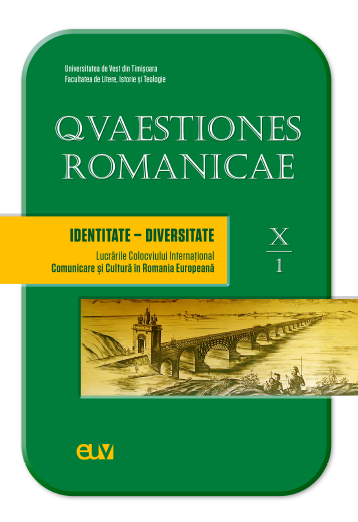L’olivo, il mandorlo e il ficodindia, impronte dell’identità siciliana in Pirandello
Abstract: (The Olive Tree, the Almond Tree and the Prickly Pear, Markers of the Sicilian Identity in Pirandello) More than other authors, Luigi Pirandello manages to conquer universality through an art deeply marked by his innermost identity, an identity that can be recognized even when his works are set in completely different locations. Perceptible in the reality of the places and in the thoughts of the characters, his native Sicily is never abandoned, even though it is not exalted either. Pirandello does not feel the need to affirm his sicilianity in his writings; instead he carries it inside and from there it reverberates throughout his work. Besides this inner level, Sicily is concretely present in many texts in which Pirandello dwells on specific details, from climate to traditions, from nature to mentalities. The comments of Sciascia, of Camilleri and of Pirandello's critics on the Saracen olive tree, a symbol of memory, a symbol of the soul, are well known. But there are other recurring elements of the island's botany, such as the almond tree or the prickly pear, whose role is fundamental to shape a universe that goes beyond metaphor. In Pirandello's texts we find many images of his primordial space: the shadow of the olive trees, Saracen or not, the almond trees in bloom, the prickly pear hedges. We therefore propose to analyze the way in which these elements define a geographical place but, above all, an identitarian one that marks the work and the life of the writer.
Keywords: Pirandello, Sicilian identity, olive tree, almond tree, prickly pear.
Riassunto: Più di tanti altri autori, Luigi Pirandello riesce a conquistare l’universalità attraverso un’arte profondamente segnata dalla sua tipicità identitaria, che traspare anche dai suoi scritti ambientati altrove. Individuabile nella realtà dei luoghi e dei pensieri dei personaggi, la Sicilia natia non è mai abbandonata così come non è neanche esaltata. Pirandello non sente il bisogno di affermare la propria sicilianità in quello che scrive, ma ce l’ha dentro e da lì si riverbera in tutta la sua opera. Oltre al livello ideatico, la Sicilia è concretamente presente in molti testi in cui Pirandello si sofferma su dettagli specifici, dal clima ai costumi, dalla natura alle mentalità. Sono ben noti i commenti di Sciascia, di Camilleri e della critica pirandelliana sull’olivo saraceno, simbolo della memoria, simbolo dell’anima. Ma ci sono anche altri elementi ricorrenti della botanica isolana, come il mandorlo o il ficodindia, il cui ruolo è fondamentale per delineare un universo che va oltre la metafora. Nei testi di Pirandello si ritrovano le immagini del suo spazio primordiale: l’ombra degli olivi, saraceni o no, i mandorli in fiore, le siepi di fichidindia. Ci proponiamo dunque di analizzare il modo in cui questi elementi definiscono un luogo geografico ma soprattutto uno identitario che scandisce l’opera e la vita dello scrittore.
Parole-chiave: Pirandello, identità siciliana, olivo, mandorlo, ficodindia.
